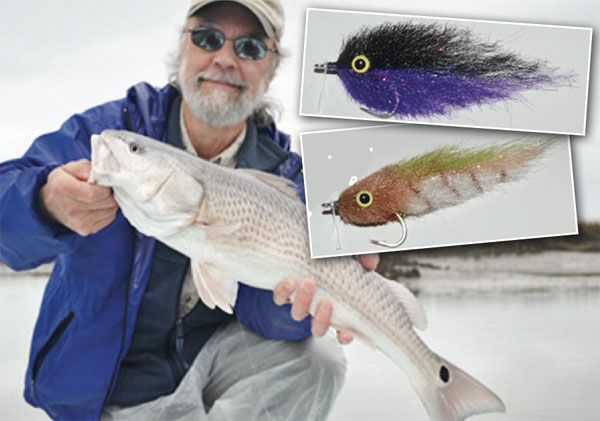By Scotty Davis
A lot is about to happen, weather-wise and fish-wise. The abundance of bait in our marshes, creeks and rivers is fading, and the redfish are forming schools. Big schools. They are anything but easy, so get your gear in shape and formulate a plan.
Finding the schools of winter reds can be difficult, but once you find them, you’ll wonder how you ever missed them. They gather in winter mainly for protection from dolphins, and as a whole, inherit a nervous attitude. Once you’ve located the schools by poling or drifting very quietly down a bank, set up and wait on them to approach you.
By anchoring or staking out, you cut down on noise and set yourself up for a good shot. Prey never swims towards a predator, so fish accordingly. By being set up, you can wait on the fish to swim to you. I will throw my fly early, well before they get in my casting window, and begin a slow yet erratic strip when they get there. If the fish are facing away or approaching from a different angle, you will have better luck letting the fly sit still rather than stripping towards the fish. Fly choice is up to you, but I load up heavy on dark flies, with black and purple being my favorites. Any of the Enrico Puglisi baitfish patterns fish great this time of year, as they sink very slowly and have minimal splash creating bulk. In early winter, shrimp flies crawled over the bottom will get a nod also, but I generally stick to baitfish.
Clear water and 1,000 eyes mean one thing: fluorocarbon. It is more abrasion resistant than mono, it stretches less than mono, and it has light refracting qualities that make it less visible underwater. The sad fact is that it costs three times as much as mono; however, I go all out and only use fluorocarbon leaders in the winter on the SC coast as it is the only time of year we experience extremely clear water. And although it’s not necessary, if you get rejected by a fish while using fluorocarbon, you can be sure the leader wasn’t the problem.
Winter Fly Fishing Gear
Now would be a perfect time to inspect your fly reels and rods for any damage that could stand between you and your fish. Although fly reel design is on par with N.A.S.A, with many models now sporting waterproof drags and aerospace-grade aluminum almost an industry standard, they still demand and deserve a small amount of preventive maintenance. If you have the confidence to do it yourself, by all means go for it! It’s not hard. Get grease, oil and Neats foot oil if you have a cork drag. Read the owner’s manual that came with the reel and follow instructions. This is a service we offer for free at the shop if you’re too busy or don’t have the grease. Every few years, I would send it back to the manufacturer to get the drag and all parts inspected by nerdy professionals who care a lot about your success with their reels. After all, it can’t hurt. While it’s away, check your rod guides for rust or abrasions. Fix with very fine sandpaper.
Weather Appropriate Gear
Remember the Boy Scout motto: Be prepared? Well, winter in the south is the time to be prepared. It can get brutally cold; and your lips, face and extremities will all suffer. Wool sweaters, hats, socks, a winter Buff, chap stick and plenty of water should be somewhere in your boat or pack. Throw in a pack of waterproof matches and a lighter for emergency campfires and a roll of toilet paper for tinder and other emergencies. Everyone has a cellphone, but many people forget the usefulness of a handheld VHF radio in a dire situation. If the boat batteries are dead and your phone is wet, a handheld is your only option. Being able to instantly hail help in the form of the USCG can be lifesaving. Locals in the Everglades carry 21 plus feet of radio cable, zip ties and an adapter to make the push pole into a more effective transmitter. Sunscreen is often an oversight when it is 30 degrees but just as important as during the summer. The goal is to have a blast and make it to next season.
It’s easy to hammer a school and work up some real numbers, but remember the resource and tread lightly. They will stay on the same bank all season if you keep the pressure light. Catch a few, then try and find another school…the hunt is half the fun after all.
By Scotty Davis
Lowcountry Fly Shop
(843) 388-5337
[easy-social-share]
